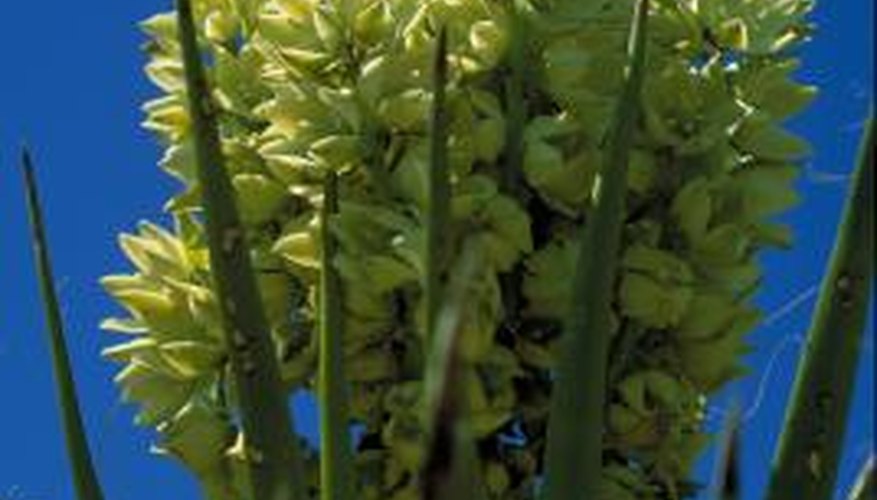The agave, a desert succulent native to the Southwest U.S. and Mexico, can be spotted as far north as Canada and well into Latin America and the West Indies. Its common name is the century plant, a misnomer based on the eight to 20 years or so it takes for a plant to produce a single tall stem and large, striking flower cluster. The agave has adaptations that allow it to survive and thrive in the often-harsh conditions of its habitat.
Eternal Agave
The agave grows from seeds but it also produces a network of shallow rhizomes, adapted to soak up all available water from the desert landscape. When the plant finally produces its white or green flower, and the flower dies, the plant dies as well. The seeds disperse with the help of wind, birds and small desert creatures. The rhizomes, protected from the sun by a layer of soil, produce a new plant. So the agave creates several opportunities for propagation to ensure its own survival. When you see a large plant that has not yet flowered, you will often find it ringed with small new offshoots, called "pups," growing from the rhizomes.
- The agave grows from seeds but it also produces a network of shallow rhizomes, adapted to soak up all available water from the desert landscape.
Leaf Adaptations
The leaves store the plant's water and are crucial to its continued existence. They are thick, fleshy spears that radiate out from a central rosette and have a slightly waxy finish. They also have sharp, spiked edges. Fibre in the leaves stores water and the coated leaf surface prevents evaporation and shields the plant like a sunscreen from the burning rays of the sun. This waxy epidermis actually reflects the sun's rays, keeping the leaves cooler. The spikes discourage predators from making a meal of the plant or using it as a source of water. The spikes are so tough that ancient peoples used them for sewing needles.
- The leaves store the plant's water and are crucial to its continued existence.
- The spikes discourage predators from making a meal of the plant or using it as a source of water.
Out of Reach
The flower stalks of the agave shoot up quickly, sometimes more than a foot a day. They rise from the rosette at the centre of the plant, a single stem per plant, and some have been measured at a height of more than 20 feet. The flowers appear in a cluster at the top of the stalk. They bloom at a convenient height for the insects and bats that pollinate them but they are far out of reach of any other predators who are of no benefit to the plant.
- The flower stalks of the agave shoot up quickly, sometimes more than a foot a day.
Human Adaptations of the Agave
The agave is an efficient botanical adaptor but no less efficient are human adaptations of the plant. Native peoples of the areas where agave grow used the plant's fibres for food and for making rope, twine and a very durable fine cloth, nets, baskets, mats and sandals. Parts of the agave were used for medicines and soaps. Some Apaches stripped the leaves off the plants and roasted the crowns in a pit lined with hot stones. The starchy vegetable made a nutritious food called mescal, a staple of their diet. Ancient brewers fermented the roasted agave for an alcoholic drink, also called mescal and still produced today. And the fermented fibre of the Weber Blue Agave is the source for a beverage made only in Mexico and exported worldwide, tequila.
- The agave is an efficient botanical adaptor but no less efficient are human adaptations of the plant.
- Native peoples of the areas where agave grow used the plant's fibres for food and for making rope, twine and a very durable fine cloth, nets, baskets, mats and sandals.
